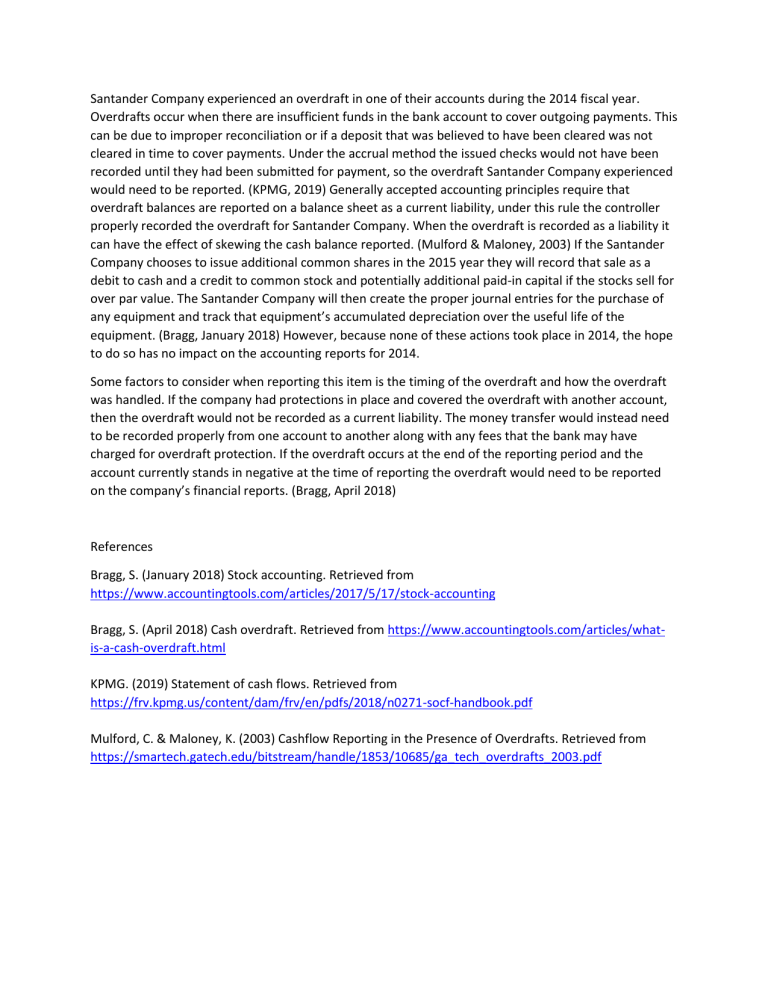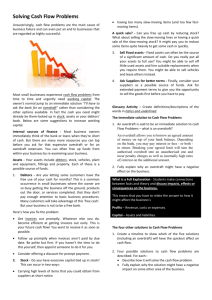
Santander Company experienced an overdraft in one of their accounts during the 2014 fiscal year. Overdrafts occur when there are insufficient funds in the bank account to cover outgoing payments. This can be due to improper reconciliation or if a deposit that was believed to have been cleared was not cleared in time to cover payments. Under the accrual method the issued checks would not have been recorded until they had been submitted for payment, so the overdraft Santander Company experienced would need to be reported. (KPMG, 2019) Generally accepted accounting principles require that overdraft balances are reported on a balance sheet as a current liability, under this rule the controller properly recorded the overdraft for Santander Company. When the overdraft is recorded as a liability it can have the effect of skewing the cash balance reported. (Mulford & Maloney, 2003) If the Santander Company chooses to issue additional common shares in the 2015 year they will record that sale as a debit to cash and a credit to common stock and potentially additional paid-in capital if the stocks sell for over par value. The Santander Company will then create the proper journal entries for the purchase of any equipment and track that equipment’s accumulated depreciation over the useful life of the equipment. (Bragg, January 2018) However, because none of these actions took place in 2014, the hope to do so has no impact on the accounting reports for 2014. Some factors to consider when reporting this item is the timing of the overdraft and how the overdraft was handled. If the company had protections in place and covered the overdraft with another account, then the overdraft would not be recorded as a current liability. The money transfer would instead need to be recorded properly from one account to another along with any fees that the bank may have charged for overdraft protection. If the overdraft occurs at the end of the reporting period and the account currently stands in negative at the time of reporting the overdraft would need to be reported on the company’s financial reports. (Bragg, April 2018) References Bragg, S. (January 2018) Stock accounting. Retrieved from https://www.accountingtools.com/articles/2017/5/17/stock-accounting Bragg, S. (April 2018) Cash overdraft. Retrieved from https://www.accountingtools.com/articles/whatis-a-cash-overdraft.html KPMG. (2019) Statement of cash flows. Retrieved from https://frv.kpmg.us/content/dam/frv/en/pdfs/2018/n0271-socf-handbook.pdf Mulford, C. & Maloney, K. (2003) Cashflow Reporting in the Presence of Overdrafts. Retrieved from https://smartech.gatech.edu/bitstream/handle/1853/10685/ga_tech_overdrafts_2003.pdf

